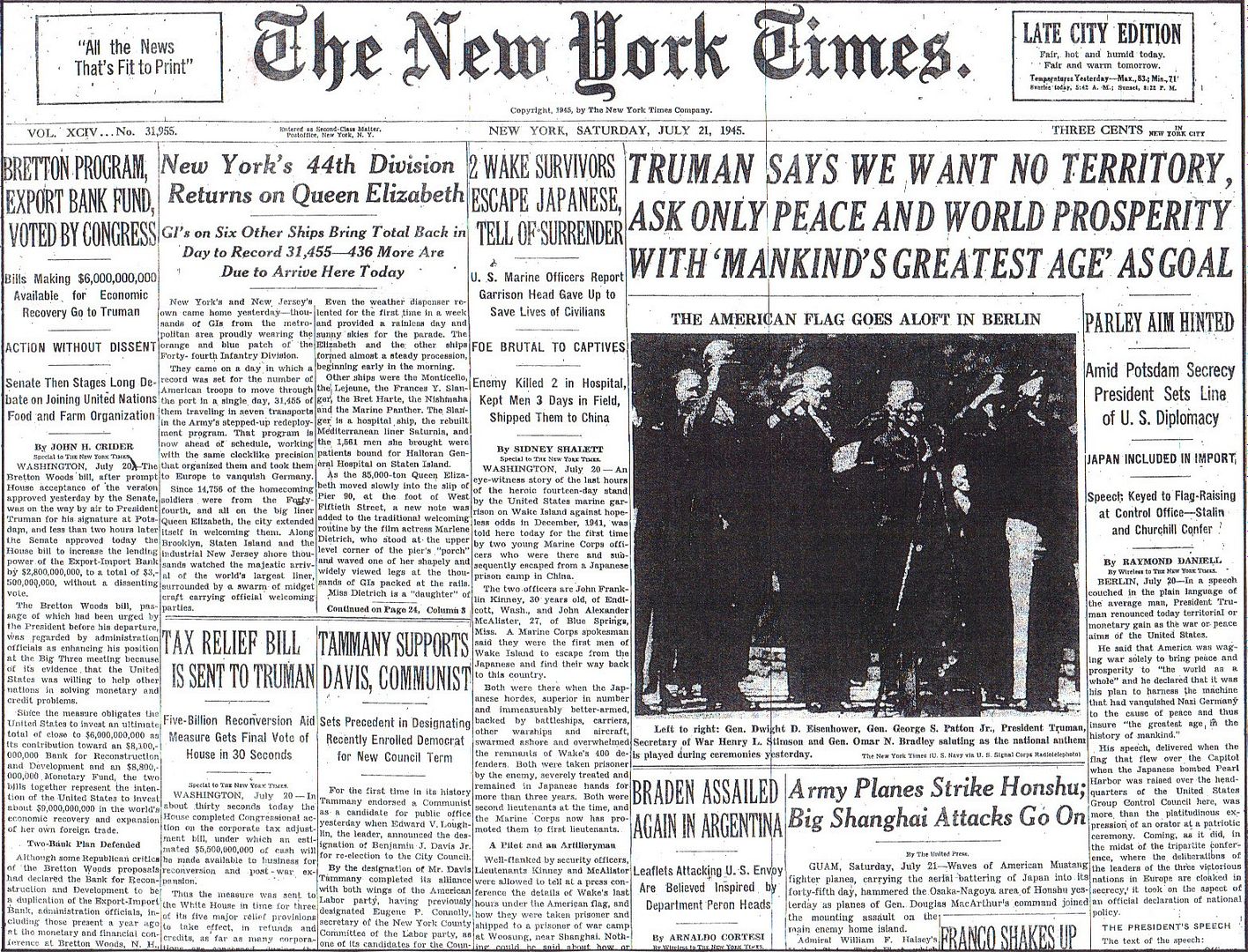
Posted on 07/21/2015 5:14:04 AM PDT by Homer_J_Simpson


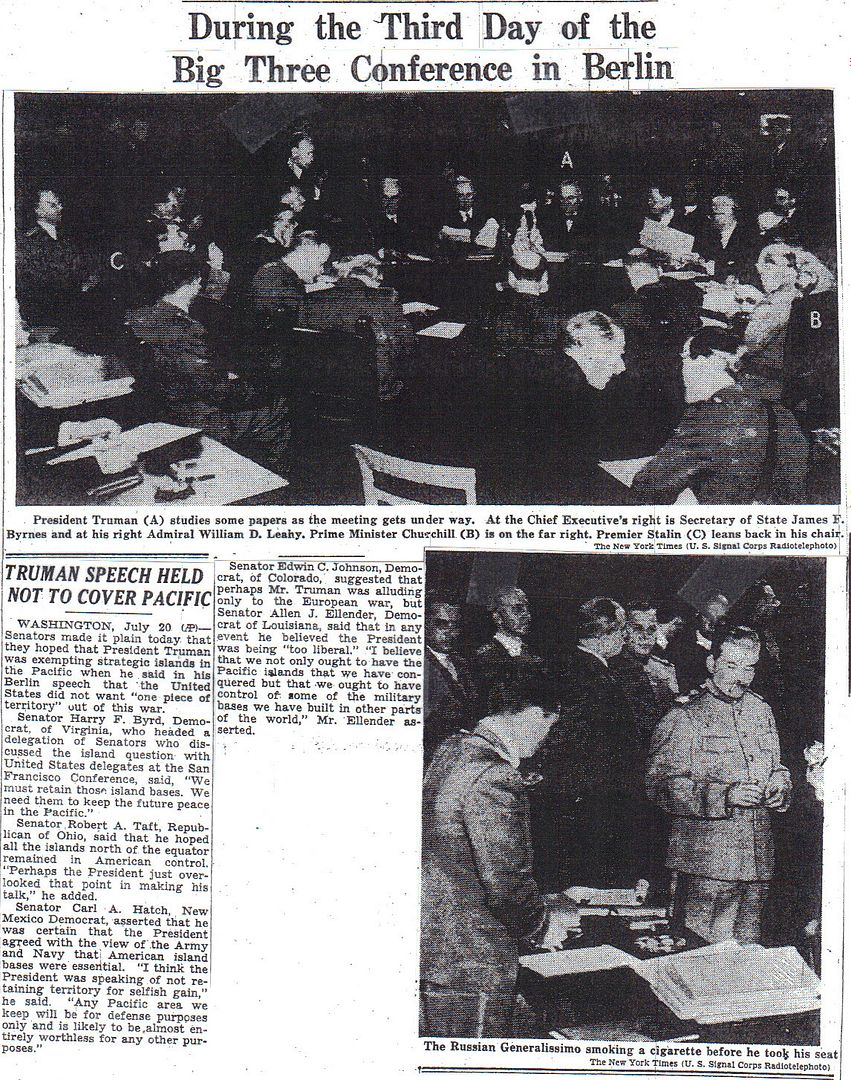
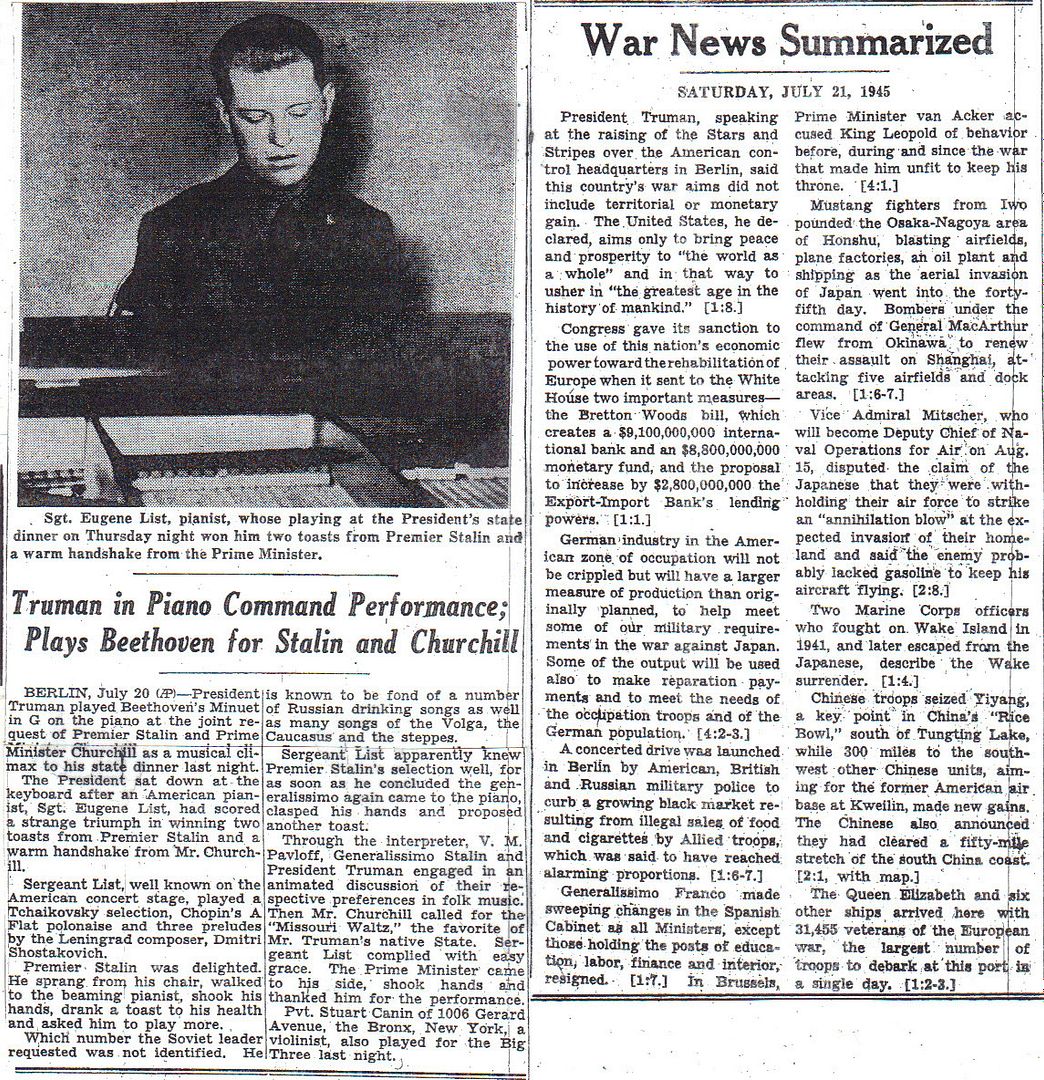
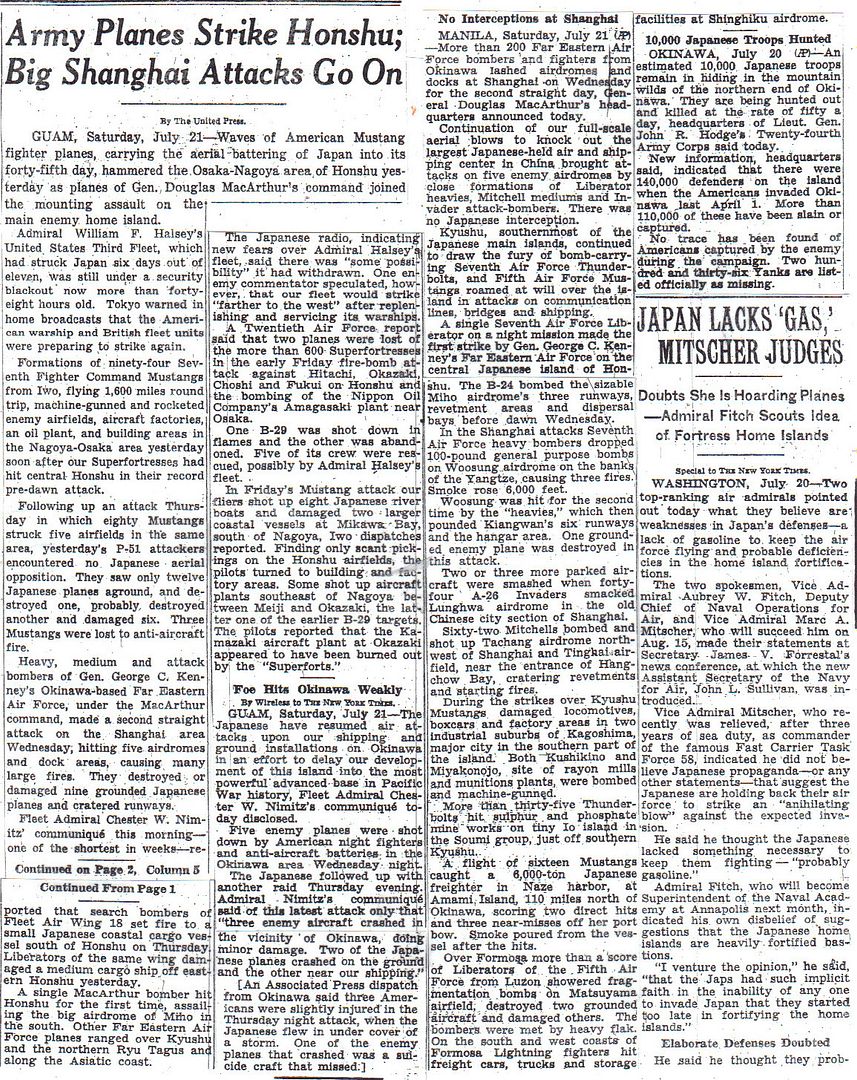
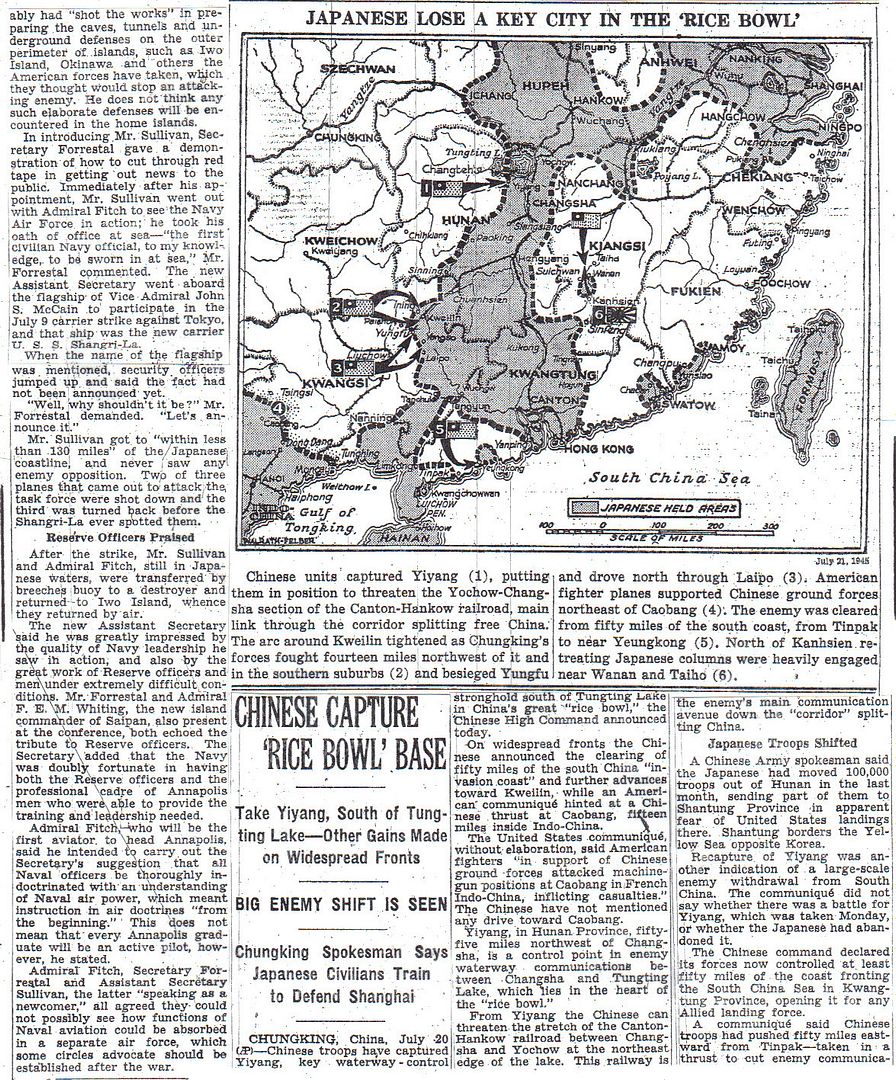
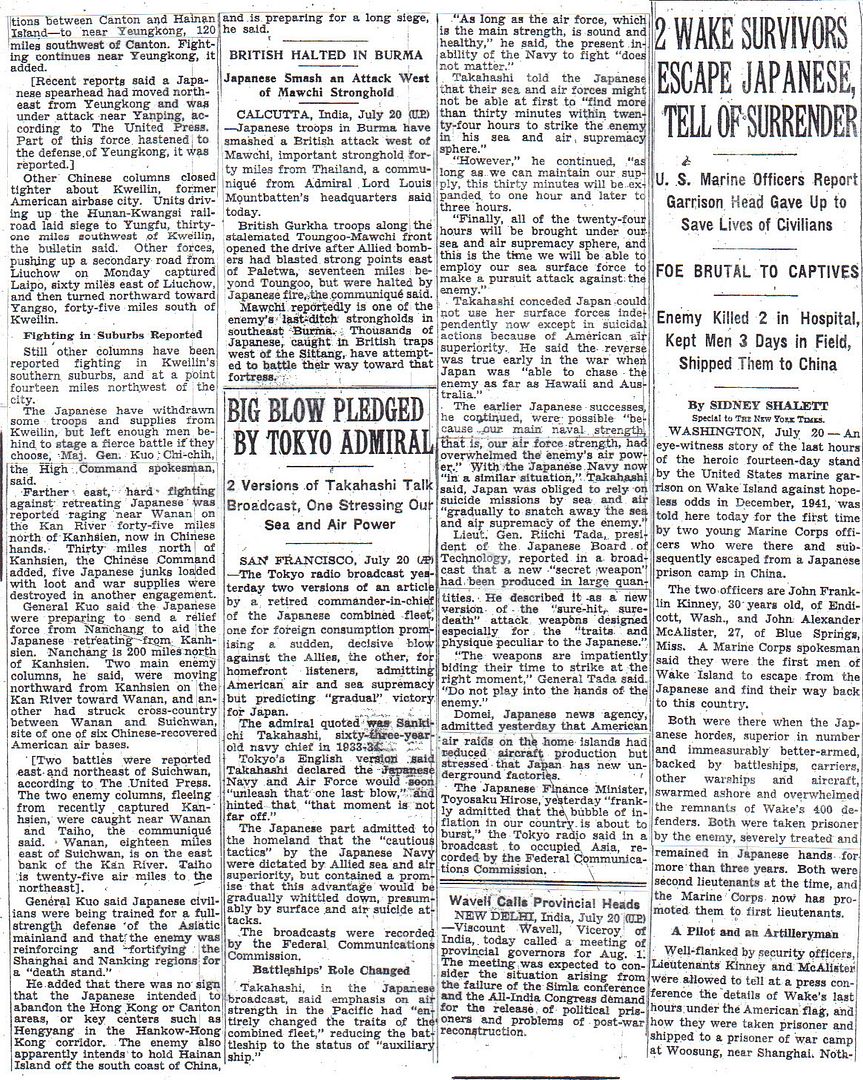
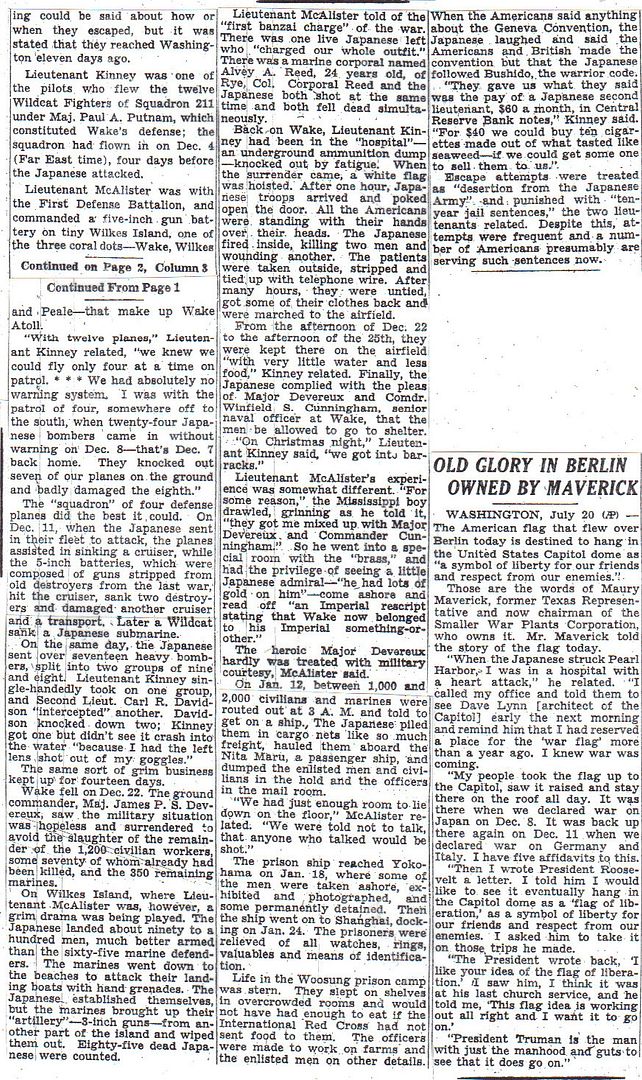
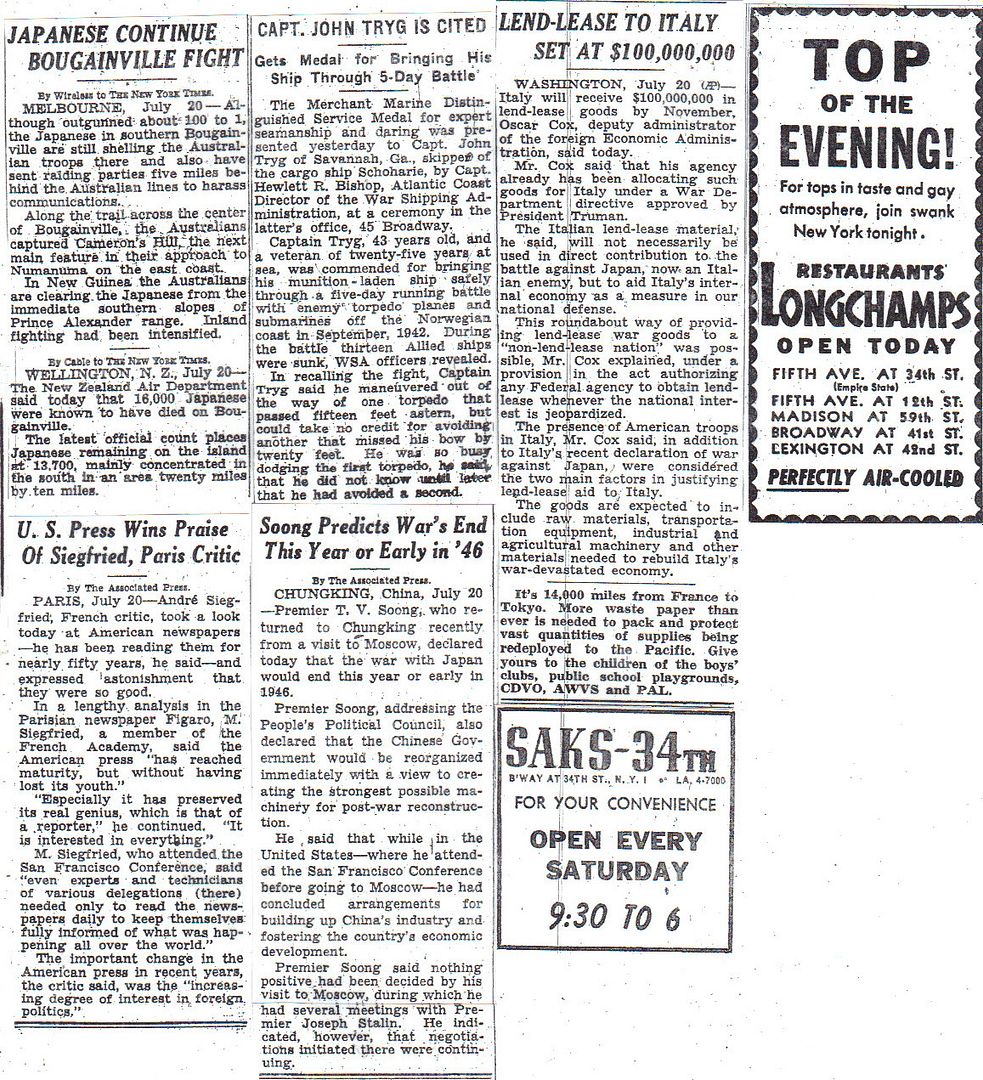

How did that turn out? Did Poland end up with what were German lands before ‘37?
I have a slightly different take on Stalin’s motives and actions. While I don’t disagree that Stalin had those three goals in mind, I want to add a fourth one, which is the Sovietization of Europe. Not so much to “spread the revolution” but as an expansion of Soviet power. And to some extent, for security too. The rise of Hitler and the Non-Aggression Pact were keys to his pre-June 1941 policies. Stalin had some opportunities to pursue the three goals you mentioned, but he declined because at the time the opportunities arose, the downside was too great. The situation of 1939-1941 presented more dangers to the USSR than opportunities, and Stalin played a very cautious game at this time. He had plans to turn it to his advantage later, if only he had the time to get there without a major war before he was ready for it. And it all revolved around his uneasy relationship with Adolph Hitler, a man he never met.
By the late 1930s, it was becoming apparent that Nazi Germany under Adolph Hitler was going to foment another major war. Stalin, who had been quiescent in international diplomacy, decided it was in the security interests of the USSR to become more of a player. To be a player with credibility and for security he needed to overhaul and expand the Red Army. The expansion part was done by rapidly mobilizing and conscripting much of the eligible male population of the USSR. The Red Army had maintained a stable force level of about 1.5 million men for most of the late 1920s and 1930s. Starting in 1937 or 1938, it began a rapid expansion, reaching a total of about 5 million in June 1941. Of course, such an expansion had its problems. In order to be a proper army, those men must be trained, equipped, supplied, and led. (While the rapid mobilization bloated the Red Army, the mobilization administrative machinery created by Marshal Boris Shaposhnikov remained in place in 1941. It allowed the Red Army to create new armies faster than the Germans could destroy them, and saved the USSR in the fall of 1941.)
In the equipment area, Soviet industry was just beginning to turn out some fine new weapons systems to equip the army, such as the T-34 tank, but in 1939, those systems were still in the development stage. Even by 1941 the Red Army was mainly equipped with obsolescent and poorly maintained weapons. Also, the level of logistic support services were not in place to support the bloated force structure.
Which gets us to the problem of leadership. By expanding the numbers of men, officers had to be rapidly promoted one or two grades beyond their experience to fill the officer billets created in the new formations. Stalin added another problem on his own. To Stalin, “overhauling” the Red Army, meant purging its leadership of anyone who might be a threat to Stalin’s rule. So he purged the officer corps with extreme prejudice. While it is true that he cleared out a lot of “dead wood” in older officers who would not have fared well in the fast-paced combat of World War 2, he also cleared out a lot of competent officers who could have learned their new responsibilities. So now you have a lot more billets to fill with far fewer officers. And those officers who survived tend not to be the Gheorgy Zhukovs; they are Dmtri Pavlov, the indecisive and unlucky commander of Western Front, summarily executed in July 1941 for not resisting the fascist invader with sufficient vigor. The Red Army officers are afraid of taking any sort of initiative, as the wrong initiative leads to the firing squad. So they will only follow written orders to the letter. That’s no way to lead an army against German Blitzkrieg. The general shortage of competent officers also led to another problem. Since the command billets had to be filled, the staff positions suffered. Many staff positions went unfilled, or were filled by men who had little idea of what staff work was. The deficit in basic operational ability was marked when the supreme test came.
The upshot is that in 1939, with war looming, Stalin knows his army isn’t ready to fight Hitler. But he was willing to consider opposing Hitler in an alliance with Britain and France, and engaged in some negotiations with an Anglo-French military mission. The problem was that the British and French were not serious about cutting a deal with the USSR, nor were they serious about fighting Hitler. It became quite apparent to Stalin that the Anglo-French strategy was to defeat Hitler by sitting out the war behind the Maginot Line and let the USSR defeat Germany at the cost of copious amounts of Russian blood. Stalin had no interest in this.
So Stalin cut his deal with Hitler. Stalin figured Germany, France and Britain would exhaust themselves in another rerun of World War 1. In the meantime, he would expand some buffer zones in Central Europe (the Secret Protocol to the Non-Aggression Pact), and would buy time to get his army in shape. Then he would clean up in Europe when both sides were ready for Red Revolution as they had been in 1918. Of course, he miscalculated. France caved in six weeks, the British were isolated...and so was the USSR, left with no allies and facing the largest, best trained best led and most experienced army in Europe.
Stalin’s new strategy after the Fall of France was then to adhere strictly to the Non-Aggression Pact in hopes he could squeeze enough time out of it. Stalin knew his army was not ready to face the Germans in 1941. In addition to all of the problems listed above, it was also occupying forward positions in newly occupied hostile territory without any adequate fortifications or supporting installations. Stalin also realizes he cannot make any new enemies at this point. So when Molotov visits Berlin in November, 1940, Hitler dangled the idea of the USSR moving southward against British Asian interests, which included India and the Perisan Gulf. Molotov demurred. Maybe Stalin was resentful of the British taking those oil fields after World War 1, but given the opportunity to take them he passed.
One reason Stalin passed on the opportunity is that it now suited him to keep Britain in the war against Germany. So long as the Royal Navy maintained a blockade of the Continent, the only way Germany could obtain raw materials was from and through the USSR. In addition to the near term belief that such reliance would keep Hitler from attacking him, Stalin had a longer term plan in mind. By 1942, or certainly by 1943, Stalin believed the balance of power would shift away from Germany and toward the USSR. The Red Army expansion and modernization would be complete, it would be a large, well-equipped, well trained and competently led force and would no longer be vulnerable to Germany. At that point Stalin would be able to engage in political blackmail of Nazi Germany. He could start demanding “concessions” in exchange for continued access to raw materials. In the end, Hitler would become his vassal. If Britain drops out of the war, that strategy goes out the window. With maritime access to raw materials, Hitler has no need of the Non-Aggression Pact and is free to turn on the USSR. Stalin also believed Hitler would not engage in a two-front war, as that strategic situation doomed Germany in World War 1. As long as Britain remains a belligerent, Stalin believed Hitler would not attack.
In any event, Stalin was wrong, his strategy failed, and Hitler turned on him in June 1941 The titanic struggle of the Russo-German War was on. I believe that Hitler sensed what Stalin’s end game was, and knew he had to strike first. The situation would never be more favorable to do so than it was in 1941. Germany may or may not have been doomed to lose from the outset, but it was a gamble they had to take. The irony here is that by being bogged down in their prolonged bitter struggle, Stalin wound up doing what the British wanted him to do and he had sought to avoid. Britain sat secure behind the English Channel, and watch the USSR defeat Nazi Germany at the cost of copious amounts of Russian blood.
Having won that struggle, Stalin is in position to accomplish most of his goals. Or can see the strategy playing out whereby he can do so. The Sovietization of Europe from Stettin to Trieste is an inevitability, as it was inevitable no later than June 22, 1941. The Americans have begged him into entering the war against Japan; Stalin is counting on Japan lasting long enough to allow him to replace the Japanese in Manchuria just as he had replaced the Germans in Eastern Europe. The British Empire is clearly in decline, and the United States through Truman’s speech today makes it apparent the United States will not take over British interests. It also appears the United States military occupation and presence in Europe will only be a token one. Thus, the USSR will be free to fill the power vacuum in the Persian Gulf.
Over all of this lies what Stalin believes is the decisive chip in the game of global power politics: The Red Army. It has become the force he wanted it to be, and he believes it’s might allows him to dictate events in Europe, Asia and even Africa. The Soviet people believe this, too. They have suffered greatly, but built a dominant war machine. The world will now have to listen to and bow to the interests of the mighty Soviet Union.
That world view will only last for another sixteen days.
In the end, the quick Fall of France, may very well have saved Europe from falling under Stalin’s boot.
Yes, Stalin got his way. Not that this will shock you, but Stalin was lying about the area already being devoid of Germans. The Poles were, however, in the process of taking their property and expelling them. It seems unjust in that the land had been German for centuries, but it’s hard to fault the Poles given how the Germans treated them from 1939 until liberation.
Interesting take. I agree. Stalin had to pay a much higher price for only half a loaf.
Who ended up with the land after the fall of the Wall?
The “ethnic boundaries” in that part of the world were not all that clear. There was a lot of intermarriage between the Germans and Poles. My dad’s family originally hails from Stettin on the Baltic (by way of Watertown Wisconsin). While we consider ourselves of German descent, my grandmother’s maiden name was Wrezonske, a Germanized Polish name.
In Pomerania, and on up through the Baltic States, the urban populations tended to be German, while the rural folk were Poles (or Balts). East Prussia was the one island of more or less “pure” Germanic stock in the region.
But when the Red Army began entering the German eastern provinces, the Red Army deliberately drove the Germans before them. They were planning an “ethnic cleansing” well in advance.
I agree with henkster that the ethnicities in Eastern Europe were not nearly as clear as in Western Europe and there were quite a few Poles living in what was eastern Germany. There wasn't as much intermixing after the Germans were expelled from Poland, Czechoslovakia and other Balkan countries. IIRC, what would become West Germany would give citizenship to any displaced ethnic German.
Kind of a similar situation to the Turks kicking the Greeks out of Anatolia after WWI.
Ike was right that Japan was already defeated. What he was wrong about was that they had no intention of acting like it. Dropping the bombs was necessary to force their surrender and eliminate the need for invasion.
It also was necessary to keep Japan from being divided like Korea and Germany.
Yes. Once he swallowed Manchuria and Korea, Stalin had every intention of invading Northern Japan and taking as much as he could.
bump!
“Immediately after the war, all territorial gains were reversed and pre-war Germany was split into British, French and American occupation zones in the northwest, west and south and a Soviet occupation zone in the centre; the capital Berlin was similarly divided into four sectors. The former eastern territories of Germany were ceded to Poland and the Soviet Union and the Oder and Neisse Rivers became Germany’s new eastern boundary. This territory became Poland’s so-called “Recovered Territories”, while approximately one-third of East Prussia became Russia’s Kaliningrad Oblast; virtually the entire German population in these areas was expelled or fled. In the west, the Saar area formed a French-controlled protectorate with limited autonomy, but its own citizenship laws.”
https://en.wikipedia.org/wiki/Territorial_evolution_of_Germany
The Potsdam Conference
At the Potsdam Conference the United States, the United Kingdom, and the Soviet Union placed the German territories within the 1937 Nazi Germany borders east of the Oder–Neisse line, and with the exception of parts of East Prussia, as formally under Polish administrative control (These were referred to by the Polish communist government as the “Western Territories” or “Regained Territories”). It was anticipated that a final peace treaty would follow shortly and either confirm this border or determine whatever alterations might be agreed upon. Northern East Prussia and Memelland were placed under Soviet administrative control. The 1919 Versailles Treaty created Free City of Danzig was also placed under Polish administration. The German population east of the Oder–Neisse line was expelled.
At the end of the conference, the Three Heads of Government agreed on the following actions:
The Oder–Neisse line
Issuance of a statement of aims of the occupation of Germany by the Allies: demilitarization, denazification, democratization and decartelization. (see also: The industrial plans for Germany)
Division of Germany and Austria respectively into four occupation zones (earlier agreed in principle at Yalta), and the similar division of each’s capital, Berlin and Vienna, into four and five sectors (one quadripartite sector), respectively.
Reversion of all German annexations in Europe after 1937, among these were Sudetenland, Alsace-Lorraine, Austria, the westmost parts of Poland, and others.
Germany’s eastern border was to be shifted westwards to the Oder–Neisse line, effectively reducing Germany in size by approximately 25% compared to its 1937 borders. The territories east of the new border comprised East Prussia, all of Silesia (except for its westernmost part around the city of Görlitz), the eastern part of Brandenburg, and most of Pomerania (including former Grenzmark Posen-West Prussia). These areas included large urban centres such as Stettin, Breslau, Landsberg an der Warthe and so on.
Expulsion of the German populations remaining beyond the new eastern borders of Germany, and ethnically German denaturalised citizens of other states such Czechoslovakia, Hungary, Poland, Romania, and Yugoslavia. France, which had not participated in the Potsdam conference, took its liberties to dismiss this point and therefore refused to absorb any expellees in its zone of occupation.[2]
Finalization of the Polish-German border
West Germany, East Germany, and the Saarland, 1949.
The problem with the status of these territories was that the concluding document of the Potsdam Conference in 1945 was not a legally binding treaty, but a memorandum between the USSR, the USA and the UK. It regulated the issue of the eastern German border, which was to be the Oder–Neisse line, but the final article of the memorandum said that the final decisions concerning Germany were to be subject to a separate peace treaty.
Based upon this interpretation of the Potsdam Agreement, the CDU controlled German government maintained that the Oder–Neisse line was completely unacceptable and subject to negotiation. Also the Social Democrats of the SPD initially refused to accept the Oder–Neisse line. Thus, the official German government position on the status of areas vacated by settled German communities east of the Oder–Neisse rivers was that the areas were “temporarily under Polish (or [Soviet]) administration.”
Between 1970 and 1990, the West German political establishment gradually recognised the “facts on the ground” and accepted clauses in the Treaty on the Final Settlement, whereby Germany renounced all claims to territory east of the Oder–Neisse line. In the Treaty of Warsaw (1970; ratified in 1972) West Germany recognized the Oder–Neisse line as Poland’s western border and renounced any present and future territorial claims; this was reaffirmed by both German states in the 1990 Treaty on the Final Settlement with Respect to Germany as a pre-condition for re-union. The treaty was ratified in 1991 by the united Germany. United Germany and Poland then finally settled the issue of the Oder–Neisse border by the German–Polish Border Treaty in November 1990. This ended the legal limbo which meant that for 45 years, people on both sides of the border could not be sure whether the status quo reached in 1945 might be changed at some future date.
https://en.wikipedia.org/wiki/Territorial_evolution_of_Germany
The Sovs turned once beautiful Koenigsburg into the armpit called Kaliningrad. Main claim to fame is that the drugs and hookers are cheap.
Much destruction was wrought by both tyrants, East and West.
And the Kaliningrad SSR became the Soviet Union’s toxic waste dump. It’s so nad that when a cash strapped Russia offered to sell it back to the Germans, they declined. There are no Germans there now anyway.
I doubt Lithuania or Poland would take it even if it were offered for free.
Hello, new user here, but long time reader of Homer’s articles.
Regarding Henkster’s take on Stalin’s motives, I would have some observations regarding some of the points expressed:
1. “In the equipment area, Soviet industry was just beginning to turn out some fine new weapons systems to equip the army, such as the T-34 tank, but in 1939, those systems were still in the development stage. Even by 1941 the Red Army was mainly equipped with obsolescent and poorly maintained weapons. “
This is not true. In fact, the Red Army had better equipment than the Wehrmacht, both in 1939 and 1941.
For instance, the bulk of the Red Army tank forces consisted of T-26 and BT tanks.
In 1939, the Wehrmacht were equipped mostly with Panzer I and II tanks. The first had only machine guns, the second had a 20 mm gun. For comparison, the soviet tanks had 45 mm guns, which were capable of destroying any German tanks from 1 km with ease.
By 1941, the Germans were fielding improved Panzer III and IV, but half of their tank park still consisted of the older models. And the soviets were improving as well, with the new T-34 and KV.
The whole “obsolete and poorly maintained” weapons seems to be a myth concocted by the post WW-2 soviet historiography to explain the 1941 defeat in a way which was not very embarrassing for the soviet power.
Because analysis of documentary evidence (which surfaced after 1991) indicate that the real problem of the Red Army in 1941 was the resentments of large masses of troops against the soviet power, which led to a massive collapse of morale and will to fight, in the context of the deterioration of the soviet command and control system in the summer of 1941.
Obviously, such a thing does not fit with the narrative of the Great Patriotic War, which insisted that all the soviet people fought to a man for the soviet regime, hence why the soviet government tried to obfuscate it after the war.
2. “But he was willing to consider opposing Hitler in an alliance with Britain and France, and engaged in some negotiations with an Anglo-French military mission. The problem was that the British and French were not serious about cutting a deal with the USSR, nor were they serious about fighting Hitler. It became quite apparent to Stalin that the Anglo-French strategy was to defeat Hitler by sitting out the war behind the Maginot Line and let the USSR defeat Germany at the cost of copious amounts of Russian blood. Stalin had no interest in this.”
This is based on the premise that Hitler would have started the war anyway if he was confronted by an alliance of UK, France and Soviet Union.
The thing is, it does not matter whether England and France were serious in their intent to fight Germany. If such a alliance was concluded, it is perfectly possible the war would not have taken place at all.
Even if Hitler was reckless enough to start it, the Soviet Union risked little. Modern war requires tremendous amounts of raw materials, which, at the time, Germany did not have. For instance, tanks and aircraft do not run with holy spirit. They need gasoline. And Germany had big problems with its supply of petroleum. If England blockaded them, there were three main sources left for Germany: Soviet Union itself, Romania and domestic synthetic oil. In 1939, Romania was hostile to Germany and unlikely to supply it with oil. The synthetic oil production was not enough. For instance, after the loss of the Romanian oil in august 1944, Germany was incapable to conduct any large scale offensive operation.
If Germany started the war in 1939 against UK, France and Soviet Union, there would have been no blitzkrieg (not enough oil for big advances by mechanized formations). The best Germany could have hoped for was a sitzkrieg... which would have meant slow suffocation for the German economy.
That’s why in 1939 Germany was desperate to reach an agreement with Soviet Union (all over august, Ribbentrop literally bombarded Schulenburg with messages insisting that he must arrange an urgent meeting with Molotov).
Without Soviet support, Germany simply could not have fought. The campaign against Soviet Union became possible only after Germany secured the whole of Europe - and, even in such circumstances, it still ended badly for Germany.
3. “By 1942, or certainly by 1943, Stalin believed the balance of power would shift away from Germany and toward the USSR. The Red Army expansion and modernization would be complete, it would be a large, well-equipped, well trained and competently led force and would no longer be vulnerable to Germany.”
This is another myth of the Soviet historiography: “we needed to gain time!” It is based on nothing.
First of all, what exactly means “the Red Army expansion and modernization would be complete”?
Let’s look at what would this imply for the tank forces alone, which formed the backbone of maneuver warfare. In 1941, the Red Army had 29 mechanized corps. Theoretically, one such corps should have had 1,000 tanks and only several were close to that number. Also, at the beginning of the war, the Red Army had 2,000 T-34 and KVs. In order to “modernize” all the 29 mechanized corps, the Soviet needed 27,000 additional T-34 and KVs. The Soviet Union produced 2,800 T-34 in 1941, 12,000 in 1942 and 15,000 in 1943. This process would have taken until the summer of 1943, at the very least. But, by that time, the old T-34/76 which were produced from 1940 onwards would have become obsolete as well! In the summer of 1943, as a result of the German upgrades, the Soviets were starting to design new models as well, which will result in the T-34/85 and IS-2.
And, besides, on what basis should anyone assume that while the Red Army “expanded and modernized”, the German army would have done nothing?
In fact, in the summer of 1943, the quality of the Soviet tank forces was (relatively speaking) at the lowest point during the war! That’s because while the soviets were still using the old T-34/76, the German started to deploy the new Tigers and Panthers and had significantly upgraded their Panzer III and IV.
In fact, Soviet Union had a significant qualitative advantage in 1941 over the German Army, because in the Soviet Union the rearmament started in the late 20’s, while Germany followed suit only from 1935. Thus, the soviets had a head-start, but slowly the Germans recovered and by summer 1943 they were evenly matched.
For instance, in 1941, the Wehrmacht was equipped, in the antitank role, with the hapless 37 mm gun, while in the latter stages of the war they had deployed new 50 mm and 75 mm PAK guns, in addition to the infamous 88. Basically, by 1944 and 1945, a hot from a 75 mm Pak 40 meant a certain kill even for the improved T-34/85.
I wish to add a fourth point, which I forgot to mention:
4. “But he was willing to consider opposing Hitler in an alliance with Britain and France, and engaged in some negotiations with an Anglo-French military mission. The problem was that the British and French were not serious about cutting a deal with the USSR, nor were they serious about fighting Hitler. It became quite apparent to Stalin that the Anglo-French strategy was to defeat Hitler by sitting out the war behind the Maginot Line and let the USSR defeat Germany at the cost of copious amounts of Russian blood. Stalin had no interest in this.”
I strongly disagree with this. Actually, I am of the opinion that Stalin never intended to join a French-British coalition (at least not in the initial stage of the war) and a careful analysis of how the negotiations unfolded clearly proves this. In fact, I would say that the Moscow talks were used only to scare Hitler into signing the Molotov-Ribbentrop pact, because Stalin simply set them up to fail. Here are some things to consider:
1. First and foremost, France and England didn’t require the Soviet Union to fight Germany. They requested only for the soviets to maintain a benevolent neutrality in case Poland was attacked. That meant: not to undertake anything against Poland while she was fighting Germany, to allow passage for allied shipments to Poland and to accept to sell Poland weapons if she wanted to buy. That was it. It was the Soviet Union who came with the proposal for an active soviet participation in the war - when Voroshilov told the French and British that the Soviet Union wanted to deploy 2-4 million troops against Germany, with all the necessary equipment.
So, if Stalin did not trust England and France and thought they were not serious about fighting Hitler, why all this additional bravado, which nobody asked for?
2. Assuming that France/England intended only to blockade Germany and sit behind the Maginot line, why does that translate into “copious amounts of Russian blood”? Soviet Union also had its own fortifications, the Stalin line, so what prevented the Soviets from doing exactly the same thing? Prolonging the war was, after all, in the interest of the Allies, because they had access to international markets. Germany didn’t. If the Allies sat behind their defensive lines, the Germany was basically compelled to try breaking the deadlock, because dragging it on meant food and fuel shortages in Germany.
Hitler might have tried to attack the Soviet Union, but he also might have tried to attack France. The chances were 50-50.
Soviet Union had no obligation to defend Poland, but England/France had. Thus it had no obligations to get out of its fortifications and rush to Poland’s help. But France/England had and, for this, they were more likely to be attacked first.
3. When Voroshilov made his proposal, he had one condition: Soviet Union must receive “corridors” through Poland so it could get to Germany. Both this request and the way it was made shows that the negotiations were a sham. Here is why:
- first and foremost, Voroshilov put this request to the French and British delegations, not to the Polish government; a Polish representative wasn’t even invited to the talks. The French and British simply did not have the authority to accept such a request and the fact it was made without consulting the Poles was a diplomatic insult, which made rejection very likely.
- assuming that the Poles somehow accepted, what exactly would have been these “corridors”? Well, basically, it would have meant the occupation of Poland by the Red Army, because you can’t cram 2-4 million troops into some narrow “corridors”.
- Stalin absolutely did not need those “corridors” if he was serious about fighting Germany. There were only 2 possible scenario: either the Polish Army stops the Wehrmacht on his own, in which case the Soviet Union does not need to fight at all, or the Wehrmacht wins and overthrows the Polish government, in which case the Soviets do not need Polish consent anymore.
And, btw, if Stalin took issue with France wanting to stay behind the Maginot line, then why exactly did he want to push the Red Army into Poland (and straight into the advacing Wehrmacht), especially if he was not wanted there?
If that is Stalin thought about the motives of France/England, then he should have let the Red Army stay behind its own Maginot line, no?
There is an anecdotical story I’ve once read in an article on a Russian site which claims that, when Ribbentrop’s visit was arranged, Stalin sent Voroshilov a note which said “Klim! Stop farce. Signed: Koba”.
The story might not be true, but this is exactly what the Moscow talks were from the perspective of the Kremlin.
Disclaimer: Opinions posted on Free Republic are those of the individual posters and do not necessarily represent the opinion of Free Republic or its management. All materials posted herein are protected by copyright law and the exemption for fair use of copyrighted works.